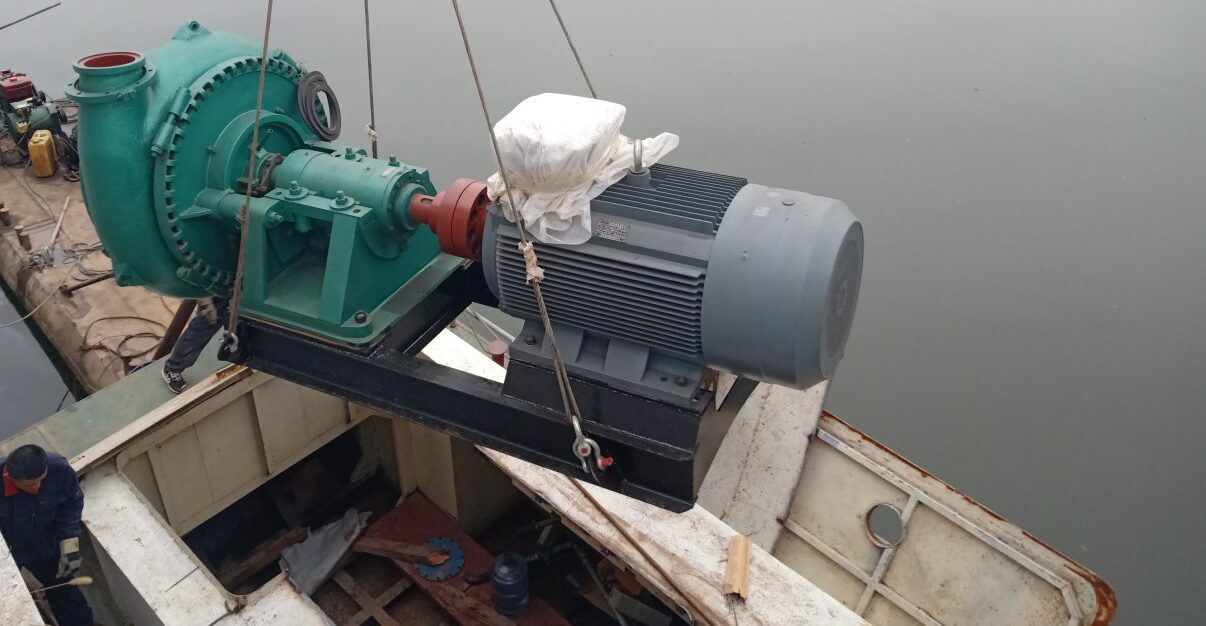1. Understanding Centrifugal Dredge Pumps:
Centrifugal dredge pumps are indispensable in industries such as mining, construction, and wastewater treatment, where the efficient transportation of liquids with high solid content is paramount. Among the various types of dredge pumps available, the centrifugal dredge pump stands out for its reliability and effectiveness. This article provides a detailed exploration of the anatomy, function, and applications of centrifugal dredge pumps, shedding light on the role of each component in fluid movement.
Centrifugal dredge pumps harness centrifugal force to propel fluids, making them suitable for handling abrasive slurries and viscous substances. Unlike other pump types, centrifugal dredge pumps operate by imparting kinetic energy to the fluid, resulting in efficient and durable performance.
2. Anatomy of a Centrifugal Dredge Pump:
Centrifugal dredge pumps consist of several essential components, each playing a crucial role in the pump’s operation:
2.1 Sand Pump Impeller:
The impeller serves as the heart of the centrifugal dredge pump, converting mechanical energy into kinetic energy to propel the fluid. Its design is pivotal in generating the required velocity and pressure for effective slurry movement.
2.2 Pump Body (Pump Casing):
Enclosing the impeller, the pump body provides structural support and guides fluid flow through the pump, minimizing energy losses and optimizing efficiency.
2.3 Guide Wheel:
The guide wheel assists in directing fluid towards the impeller, ensuring smooth and efficient operation of the pump.
2.4 Pump Shaft:
Connecting the impeller to the motor or engine, the pump shaft transmits rotational motion, enabling fluid movement. It must withstand high stresses and torsional loads.
2.5 Bearing:
Bearings support the shaft, reducing friction and facilitating smooth rotation. Proper lubrication is essential to prevent premature wear.
2.6 Sealing Device:
Seals prevent fluid leakage from the pump, maintaining efficiency and preventing contamination of the surrounding environment.
2.7 Axial Force Balancing Device:
This device counteracts the axial thrust generated by the impeller, ensuring stable operation and prolonging bearing life.
2.8 Suction Pipe and Pressure Pipe:
These pipes facilitate fluid inlet and outlet, providing pathways for fluid flow and ensuring effective pumping.
2.9 Bottom Valve:
Preventing backflow, the bottom valve maintains pressure within the pump, safeguarding against damage and optimizing performance.
2.10 Control Valve:
Control valves regulate flow rate and pressure, enabling precise control over the pumping process and enhancing efficiency.
2.11 Lubrication System:
A proper lubrication system ensures smooth operation of moving parts, reducing friction and wear, and extending the pump’s lifespan.
2.12 Guards and Brackets:
Guards and brackets protect pump components from external damage and provide structural support, ensuring reliable operation in challenging environments.
3. Function of Centrifugal Dredge Pump Components:
Each component of the centrifugal dredge pump contributes to efficient fluid movement:
3.1 Impeller:
Converts mechanical energy into kinetic energy, propelling the fluid through the pump.
3.2 Pump Body:
Guides fluid flow, minimizing energy losses and maximizing pump efficiency.
3.3 Guide Wheel:
Assists in directing fluid towards the impeller, optimizing pump performance.
3.4 Pump Shaft:
Transmits rotational motion from the motor or engine to the impeller, driving fluid movement.
3.5 Bearing:
Supports the shaft, reducing friction and ensuring smooth rotation.
3.6 Sealing Device:
Prevents fluid leakage, maintaining efficiency and preventing contamination.
3.7 Axial Force Balancing Device:
Counteracts axial thrust, ensuring stable operation and prolonging bearing life.
3.8 Pipes (Suction and Pressure):
Facilitate fluid inlet and outlet, providing pathways for effective pumping.
3.9 Bottom Valve:
Maintains pressure within the pump, preventing backflow and optimizing performance.
3.10 Control Valve:
Regulates flow rate and pressure, enabling precise control over the pumping process.
3.11 Lubrication System:
Ensures smooth operation of moving parts, reducing friction, and extending the pump’s lifespan.
3.12 Guards and Brackets:
Protect pump components and provide structural support, ensuring reliable operation.
4. Applications of Centrifugal Dredge Pumps:
Centrifugal dredge pumps find diverse applications across various industries:
4.1 Mining:
Used to transport abrasive slurries, facilitating mineral extraction from ore.
4.2 Dredging:
Employed to remove sediment and debris from water bodies, maintaining navigable waterways and harbors.
4.3 Construction:
Utilized in pumping concrete, slurry, and other fluids for construction projects, such as foundations and tunnels.
4.4 Wastewater Treatment:
Applied in wastewater treatment plants to transport sludge and effluent, facilitating the treatment process and ensuring environmental compliance.
Conclusion: Centrifugal dredge pumps play a vital role in industries requiring efficient fluid transportation. By understanding the anatomy, function, and applications of centrifugal dredge pumps, engineers and operators can optimize performance, enhance efficiency, and prolong equipment lifespan. With proper maintenance and operation, centrifugal dredge pumps can reliably handle demanding pumping tasks, contributing to the success of various industrial processes.
